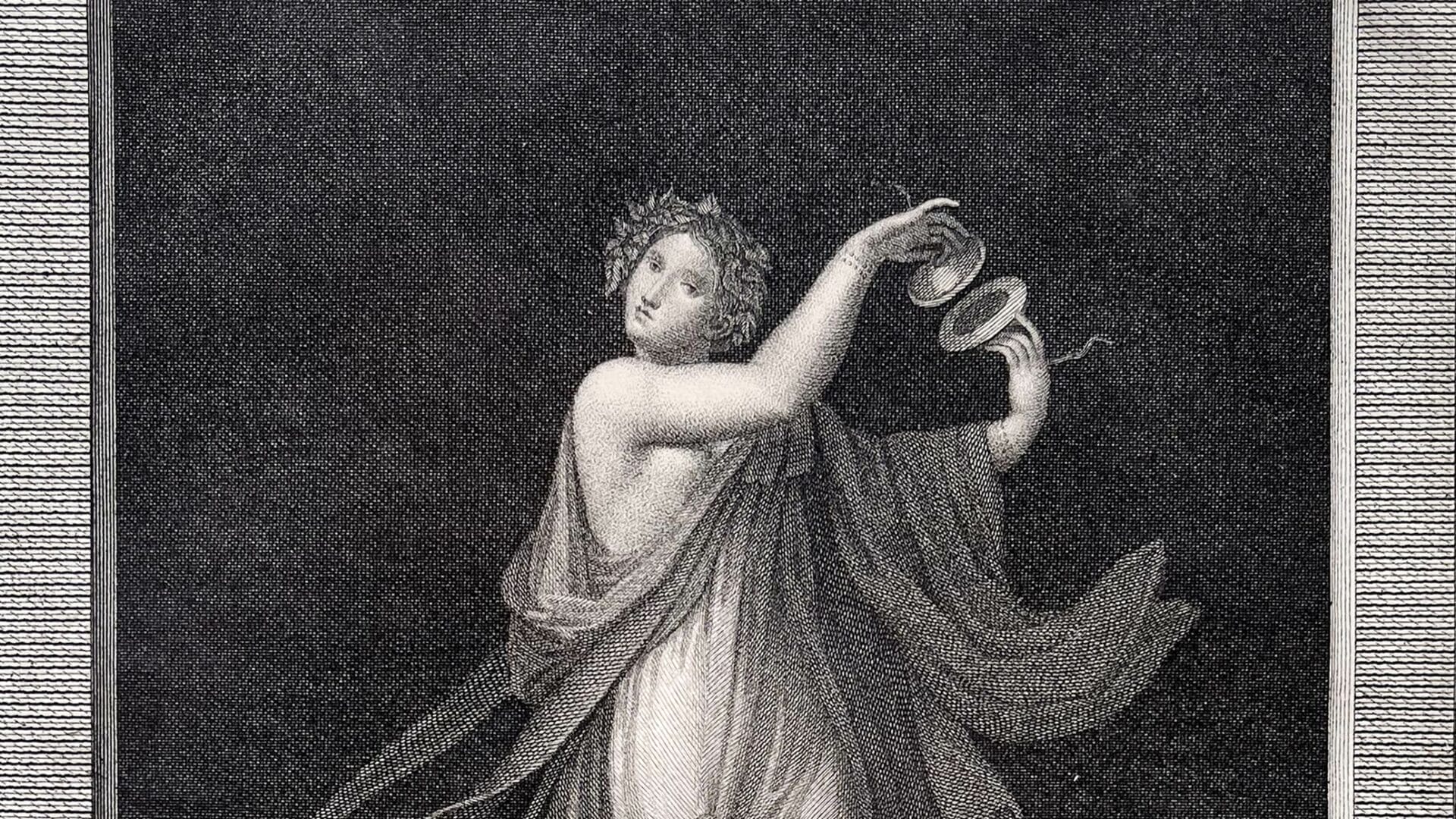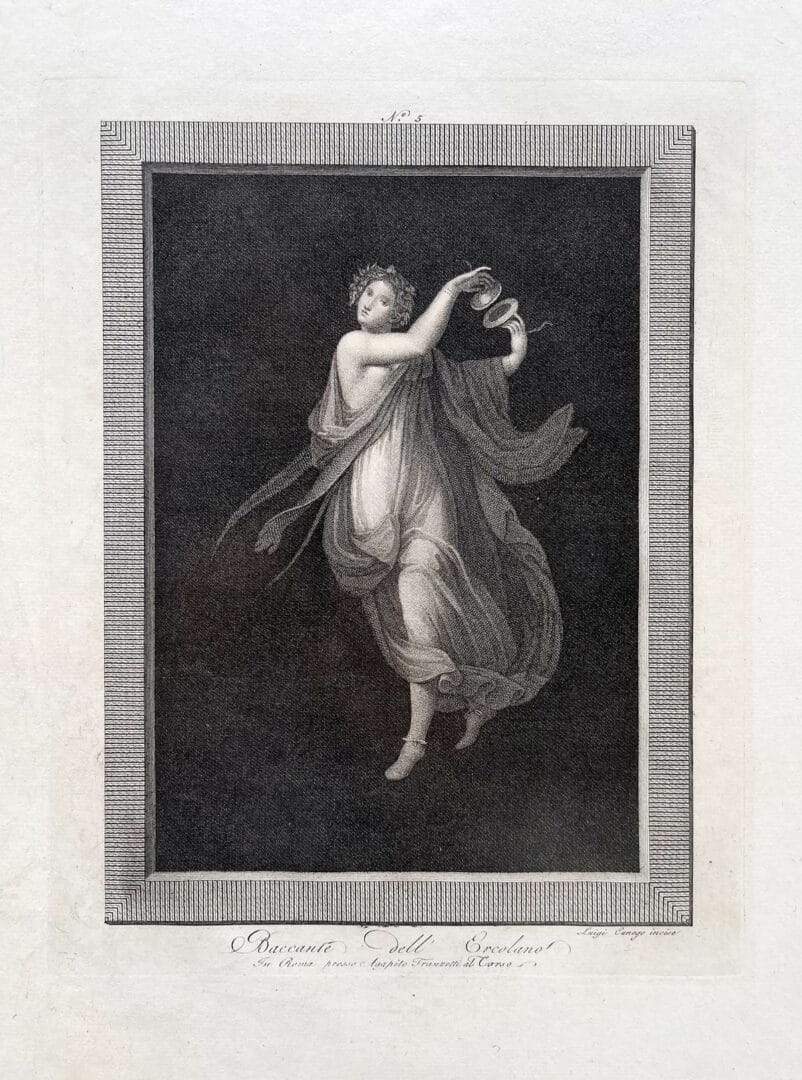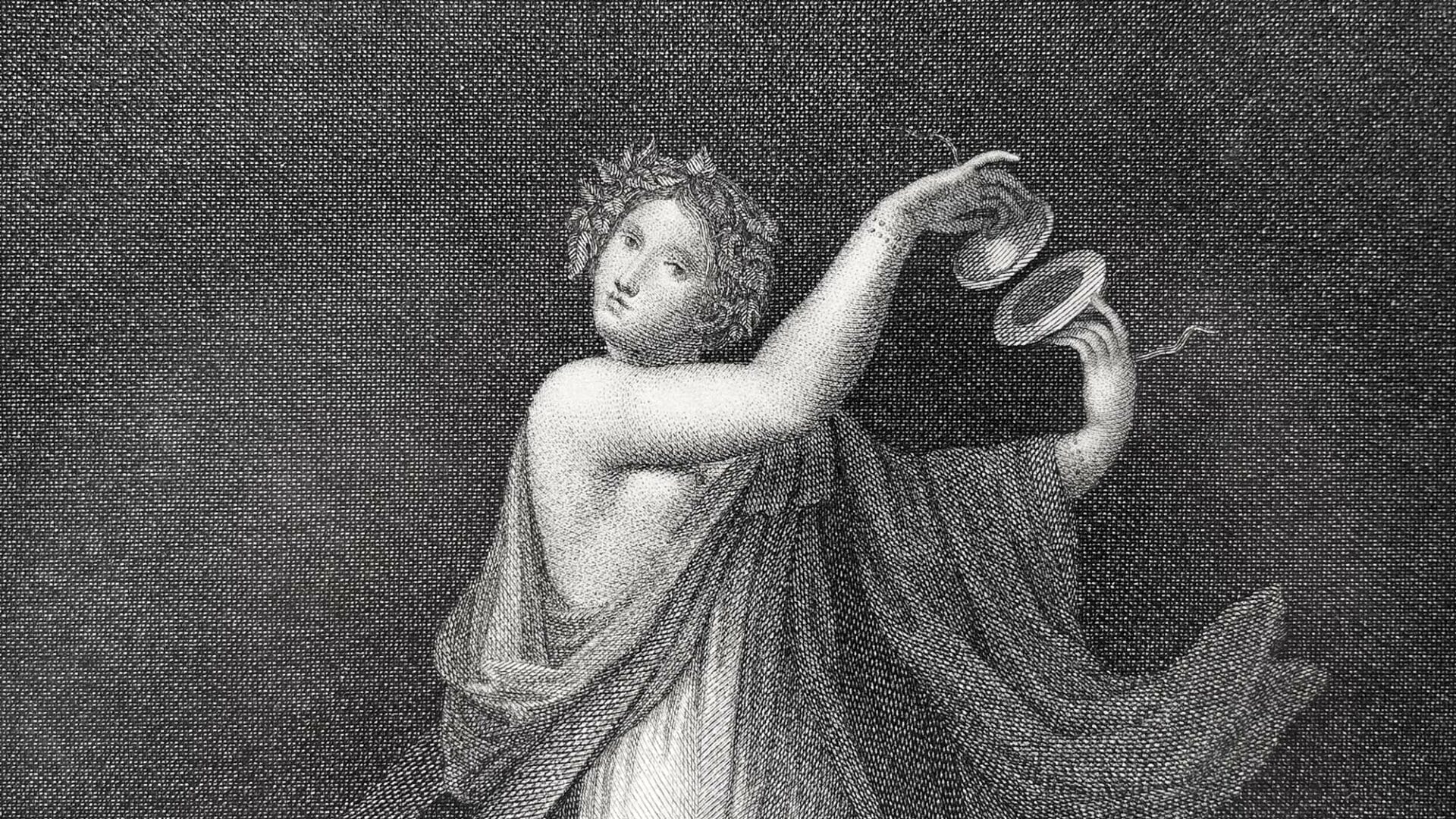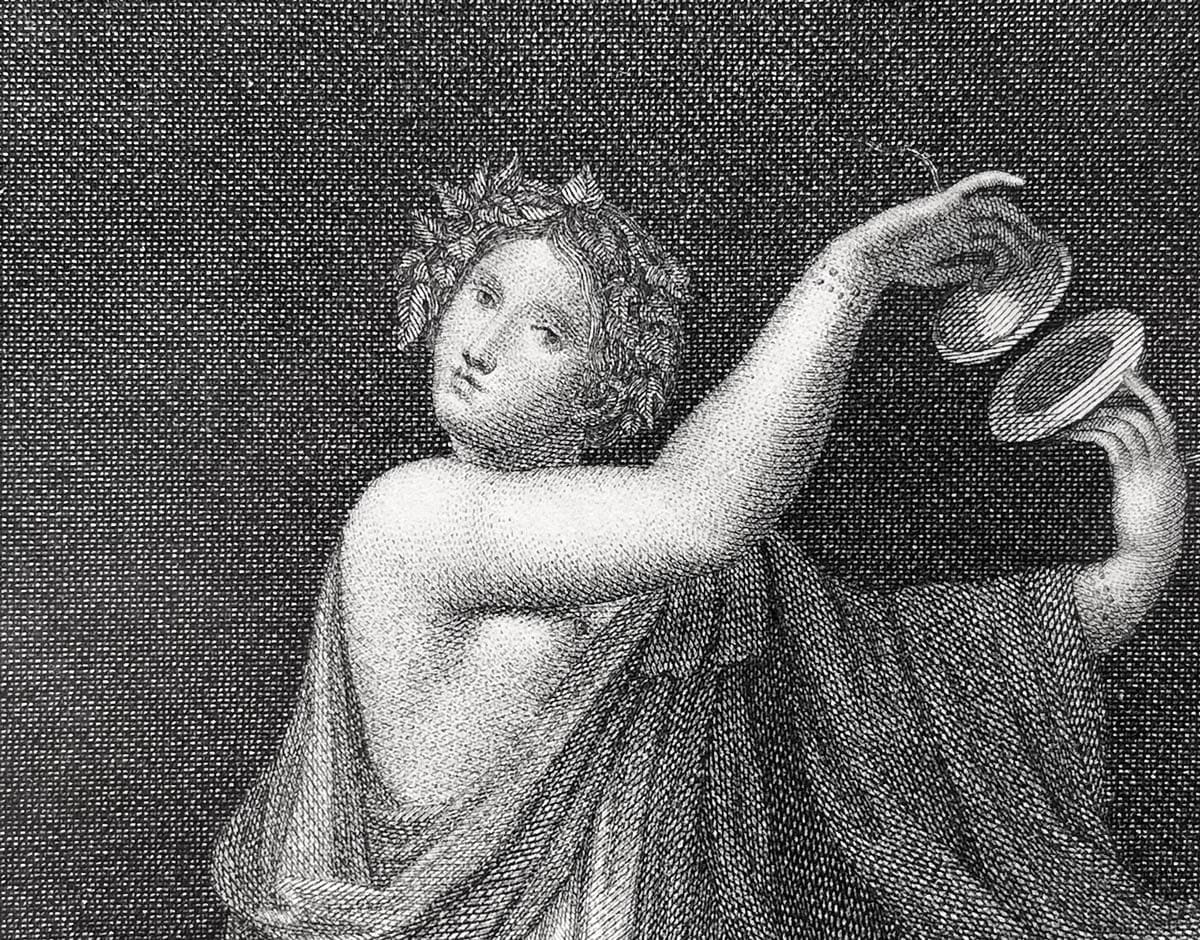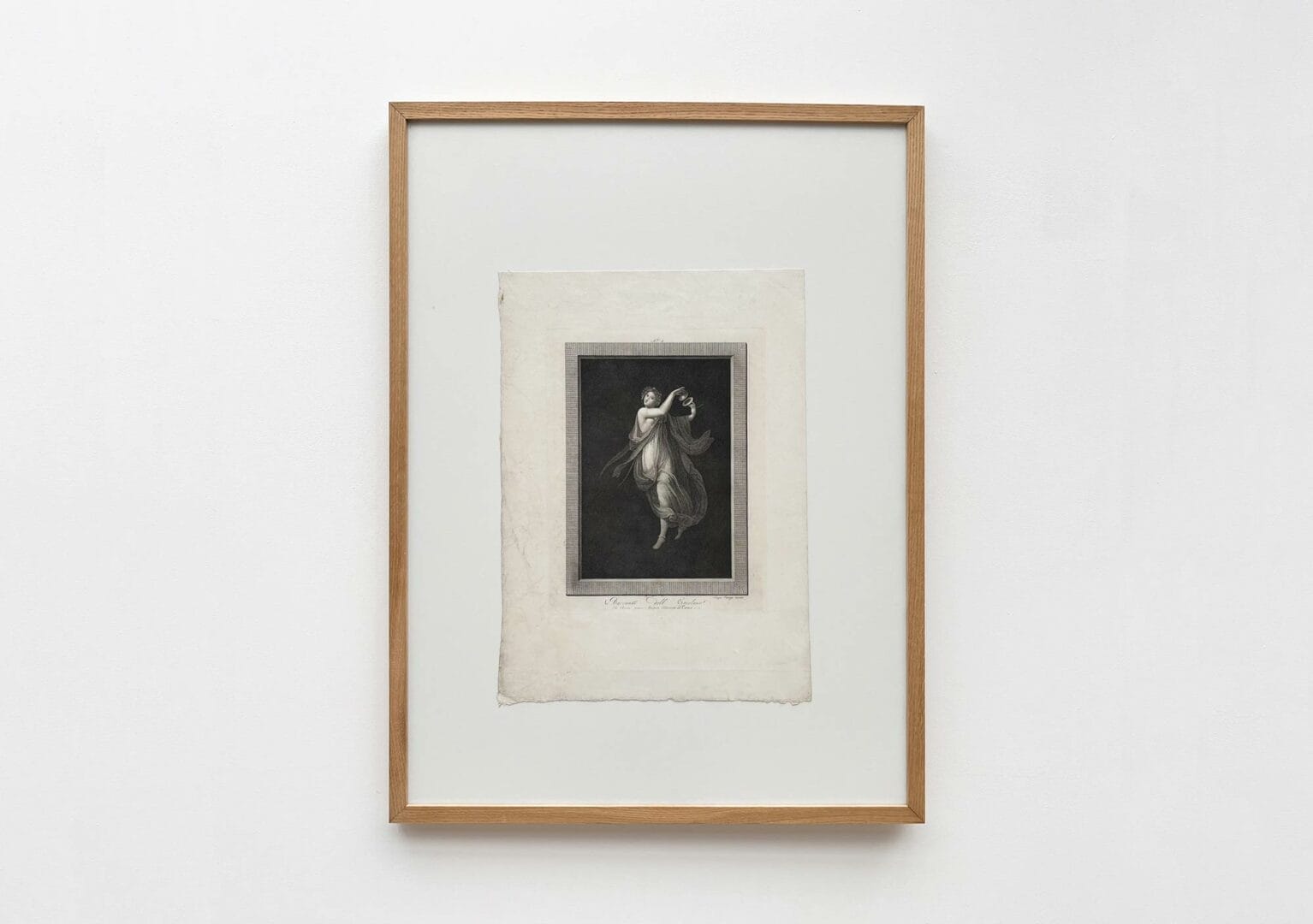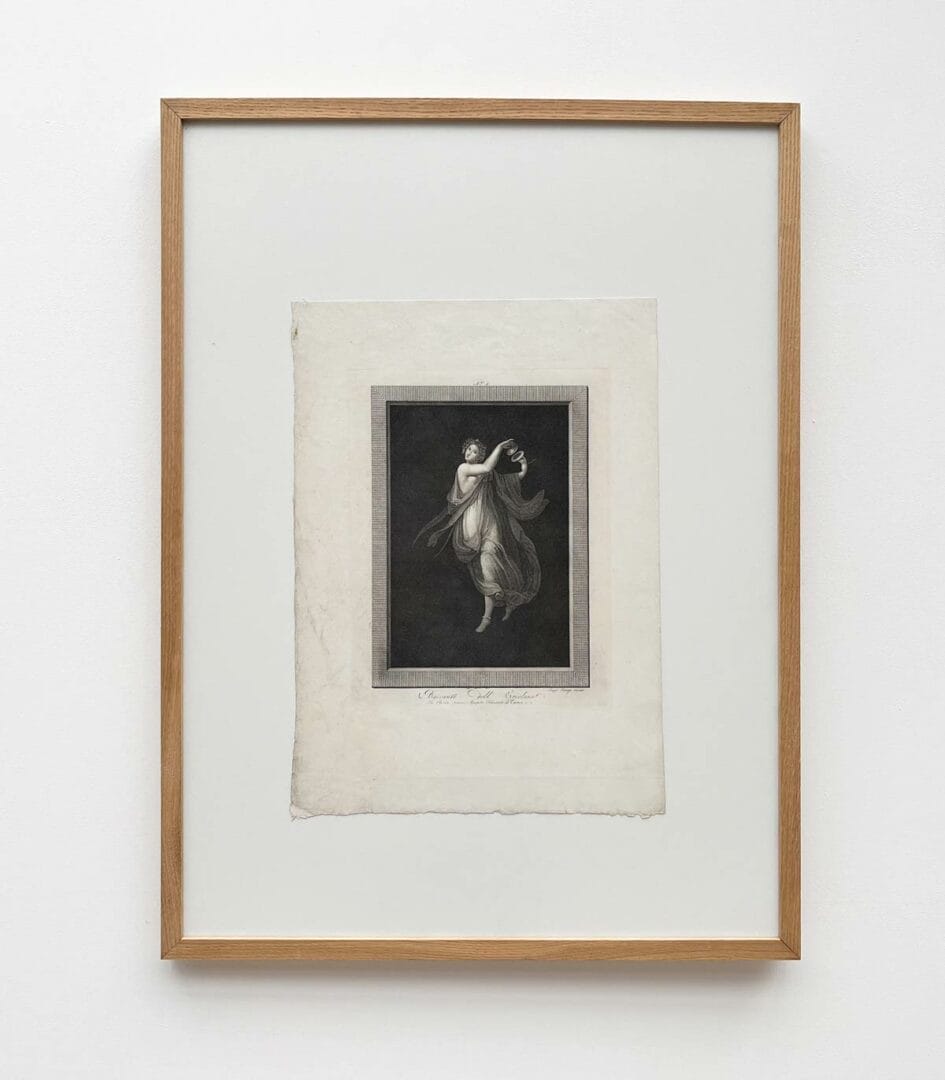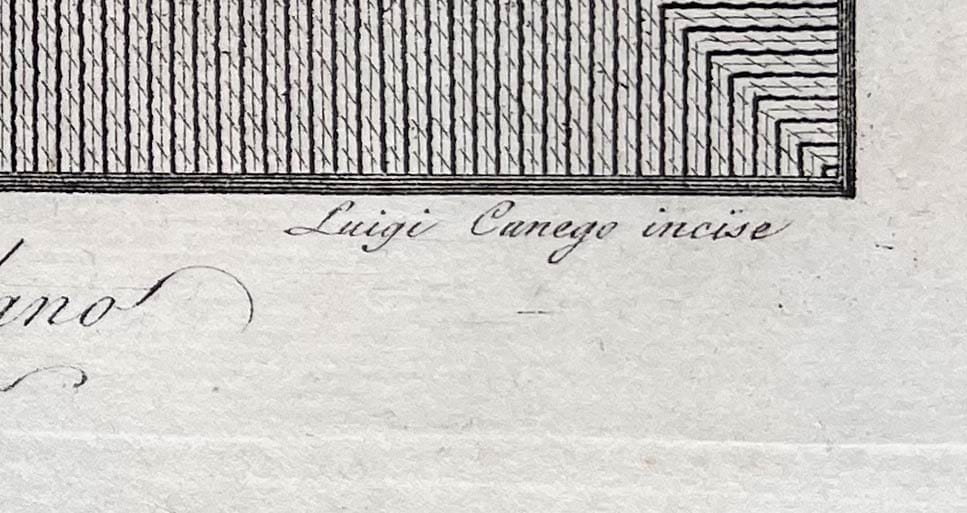Luigi Cunego
Bacchante playing cymbals – Chisel engraving
Luigi Cunego
Bacchante playing cymbals
Date : around 1795 - 1820
Dimensions du feuillet : H : 50 cm ; L : 36,5 cm
Dimensions au coup de planche : H : 33 cm ; L : 26 cm
place of production: Rome (Italy)
Material : Vergé paper
Condition : Good condition – wides margins – restored
References : Similar prints held by the Metropolitan Museum of Art, New York.
Conditions & disponibilité: Available - framed with a black satin-finished wooden molding - mounted with white conservation-grade mat board, mat with a beveled edge - UV-protective synthetic glass.
450 €
Description
of work
PRINT DEPICTING, SURROUNDED BY A FRIEZE, A HALF-NAKED BACCHANTE, WEARING A GARLAND AND PLAYING CYMBALS. BEARS THE INSCRIPTION: BACCANTE DELL ERCOLANO IN ROMA PRESSO AGAPITO FRANZETTI AL.CORSO LUIGI CUNEGO INC(ISE).
This engraving in burin and etching, published by Agapito Franzetti in Rome, was engraved by Luigi Cunego.
The engraving depicts a cymbalistria dancing and playing cymbals as part of a cult to Bacchus.
Bearing the number 5, this engraving is part of a series depicting the dancers of Pompeii. These dancers or bacchae were originally depicted in frescoes decorating a villa in Pompeii, not in Herculaneum, as the inscription Baccante dell Ercolano might suggest.
These frescoes became famous when they were discovered in Pompeii during the excavation of the Villa of Cicero in 1759, and are now housed in the Naples Museum of Archaeology. Ercolano is referring here to the Gate of Herculaneum, the Pompeian site of the Villa of Cicero, where the frescoes adorned the walls.
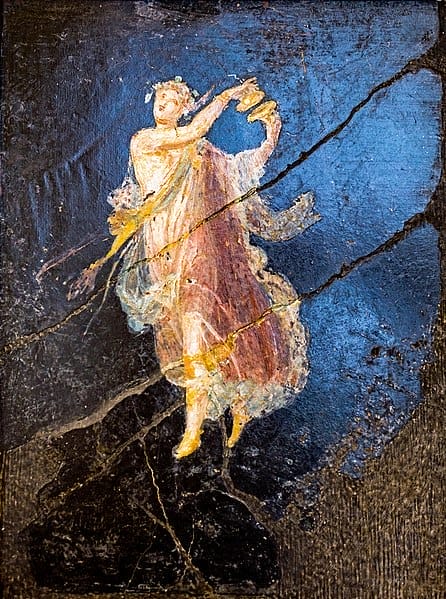
"We would learn more about the domestic history of the Roman people and the state of civilisation from a few walks through restored Pompeii than from reading all the works of antiquity.." Chateaubriand - Voyage en Italie

Luigi Cunego
Verona ( Italy ) 1757 - Rome ( Italy ) 1823
The son of the famous engraver Domenico Cunego, who was one of the very first engravers to combine the techniques of burin and etching, Luigi learned engraving from his father with his brother Giuseppe, and worked with famous artists such as Antonio Canova.
the work
in its context
The 18th century saw the rediscovery of Pompeii and Herculaneum, ancient Roman cities destroyed by the eruption of Mount Vesuvius in 79 AD. These excavations were the first major archaeological digs in the Western world, and had a major impact on the European aesthetic of the time.
Encouraged by the Grand Tour, an interest in Antiquity and its particular aesthetics spread throughout Europe. The Grand Tour consisted of young English, French and Prussian aristocrats visiting the remains of ancient civilisations in Europe during their formative years, particularly in Italy and Greece.
At the same time, a new artistic movement, neoclassicism, was developing in the West. Both a reaction to the Baroque and Rococo styles and an expression of the currents of thought nourished by the philosophy of the Enlightenment, Neo-Classicism manifested a desire to return to the sources of art, whose origins were thought to be ancient.

Architecture, painting and then sculpture were theorised and became vehicles for expressing the virtues attributed to Greek democracy and the Roman republic. The “enlightened” elites and rulers, including monarchs, were seduced and convinced by these ideas, and played an active part in spreading this aesthetic. For example, the future King Charles III of Spain had an engraved collection Le pitture antiche d’Ercolano e contorni incise con qualche spiegazione (The ancient paintings of Herculaneum and the engraved contours with some explanations) distributed in the West, in which we can admire our bacchantes drawn by Camillo Paderni and engraved by Filippo Morghen.
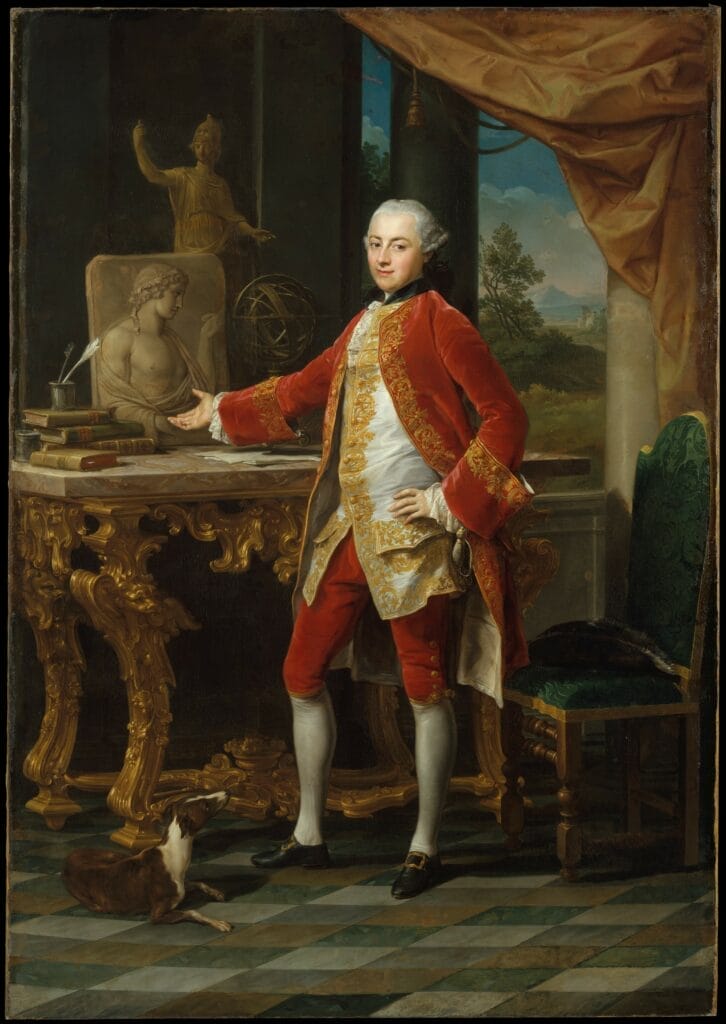
sources
Le pitture antiche d’Ercolano e contorni incise con qualche spiegazione (https://archive.org/details/A216167/)
Lenormant, François (1837-1883). Chefs
d’oeuvre de l’art antique. 2e série, Monuments de la peinture et
de la sculpture. Tome 3 / 1867-1868.
- Metropolitan Museum de New York, USA – (https://www.metmuseum.org/art/collection/search/669050)
